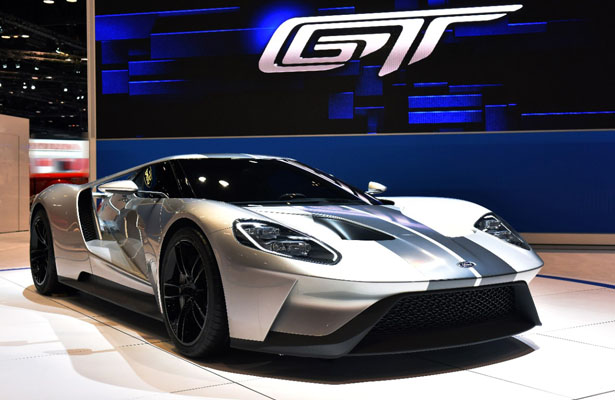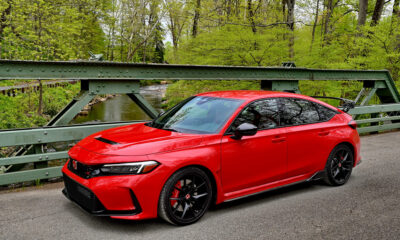
Photo: Ford
While Detroit marked its official unveil and debut, the 2016 Ford GT was also one of the star attractions at this year’s Chicago Auto Show.
The 600-plus horsepower 3.5L EcoBoost V6, primarily carbon fiber efficient and lightweight supercar was on display at Ford’s booth during the media preview days, and will continue to be throughout this week.
Although Ford isn’t confirming anything yet about its anticipated racing program, the manufacturer still had plenty to discuss at the auto show about the GT itself.
Making sure the car stayed true to the heritage of the Ford GT was key to the design process, said Garen Nicoghosian, Ford GT senior designer.
“Because of the heritage, certain things were kept intact. We recognize what a GT is,” Nicoghosian told Sportscar365.
“A few elements repeated itself. Between the front fender going into the body, the brow, the nostrils, the horizontally stacked front headlights and circular taillights on the back with a center exit exhaust are all things we adhered to, but did so in a modern way.”
For Jamal Hameedi, Ford performance chief engineer, the 2016 Ford GT represented a clean slate to build upon the previous design of the 2005 concept car, before that car’s round of production.
“So all the engineers are very excited now, like we were so excited in 2005 to be all-aluminum with the old Ford GT,” Hameedi told Sportscar365.
“Now we are in the next journey doing a carbon fiber supercar. It’s not ornamental. It’s not just the body paneling. The structural tub is made out of carbon fiber. This gets to the essence of the car… its purity of purpose.”
Hameedi worked on the 2005 car and said the new one offered a greater amount of options in the engineering process.
“It was a concept car that we made the call to go do it,” he said. “But it was very limited because outside was a frozen entity. This car, the engineers could really spread their wings. This car was really a clean sheet.”
Hameedi also expanded on the power output of the car and how the Ford GT should be able to make this amount.
“The power really wasn’t that difficult,” he said. “Right now, we’re running the Daytona Prototype EcoBoost V6 that’s been very successful.
“The power here wasn’t a big stretch. The car isn’t about power; it’s power to weight, aerodynamics and efficiency.
Considering Ford’s relationship with Chip Ganassi Racing in developing the 3.5L EcoBoost V6 turbo in the TUDOR United SportsCar Championship, Hameedi said the power amount wasn’t too difficult to achieve.
“We’ve been working with Chip Ganassi for several years,” he said. “That class was completely 100 percent V8 engines. Then they embraced the mantra of, ‘Let’s go V8 hunting with the EcoBoost V6,’ and it’s worked out great.”
For Nicoghosian, the biggest design challenge was trying to nail all the design brief elements in a tight timeframe.
“We had to make a legitimate product that looked great, performed incredibly and do it within a year,” Nicoghosian said. “It meant a lot of hard work and sleepless nights.
“We had to pay homage and heritage to what we’re doing. It’s an iconic step, and it’s bigger than us all.
“We had to capture that essence, bring it into the current century, and be true to the car and performance through innovation.”

























